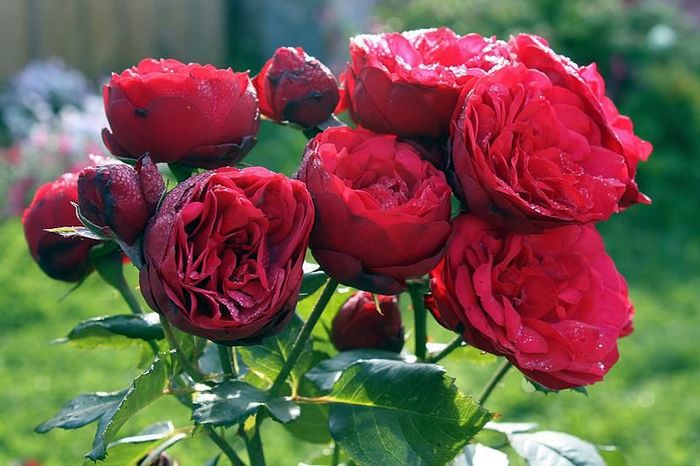Content:
Hybrid tea varieties are the most popular of all varieties of roses among flower growers around the world. Such flowering shrubs fell in love with gardeners because of the beautiful and large flowers, the high decorative effect of the bushes during the flowering period, the increased resistance of plants to frost and diseases.
Those flower lovers who would like to purchase unusual varieties of the "queen of flowers" for their plot should pay attention to the series of Piano peony roses, in particular, the Red Piano Rose.
Hybrid tea roses, the history of the creation of Red Piano
A few decades ago, in different countries of the world, including in Russia, tea varieties of roses were incredibly popular - neat shrubs with incredibly beautiful large flowers. These flowers, for all their decorativeness, also had disadvantages - they were affected by pests, and had a low resistance to diseases. Therefore, they required careful care.
To facilitate the work of flower growers, the breeders set out to develop new hybrids that would have all the best qualities of tea roses, but would not have their disadvantages. Tea roses were taken as a basis, which were crossed with other varieties of the "queen of flowers".
Rose Red Piano, like other varieties from this series, was bred by German breeders. Thanks to the bright color of large flowers and a number of other positive qualities, this perennial was almost immediately noted by flower growers as one of the most beautiful varietal flowering shrubs.
Description and characteristics of the variety
Rose Red Piano is a compact shrub of medium height (shoots grow about 1 m long), no more than 0.6 m in diameter. Large leaf plates with a characteristic glossy shine and dark emerald color.
This hybrid fascinates anyone who has seen it at least once: rich red, densely double buds, blooming, turn into large cupped flowers, the diameter of which can be up to 11-12 cm. Each flower has at least 95 petals. The buds exude a delicate fruity aroma and are usually collected in inflorescences, each of which contains at least 3 flowers.
Agricultural technology of cultivation
Since the seedlings of this hybrid are sent to customers with a closed root system, there are no problems with the acclimatization of these bushes.
Planting holes are dug based on the size of the root system with a clod of earth. The soil should be loose and fertile.
Further care includes adhering to the watering regime, loosening the soil, removing weeds, applying the necessary fertilizers, regularly pruning shoots and removing buds that are fading.
In regions with frosty winters, it is recommended to cover the Red Piano bush rose before the onset of cold weather.
Advantages and disadvantages of the variety
The main advantages of this hybrid include:
- high resistance to diseases;
- beautiful large red buds;
- profuse flowering throughout the season.
There were no drawbacks in this hybrid.
The Red Piano hybrid tea rose can be used for both cutting and landscaping park areas, and planted in garden plots. The Red Piano hybrid looks good against the background of deciduous and coniferous shrubs and small trees.














